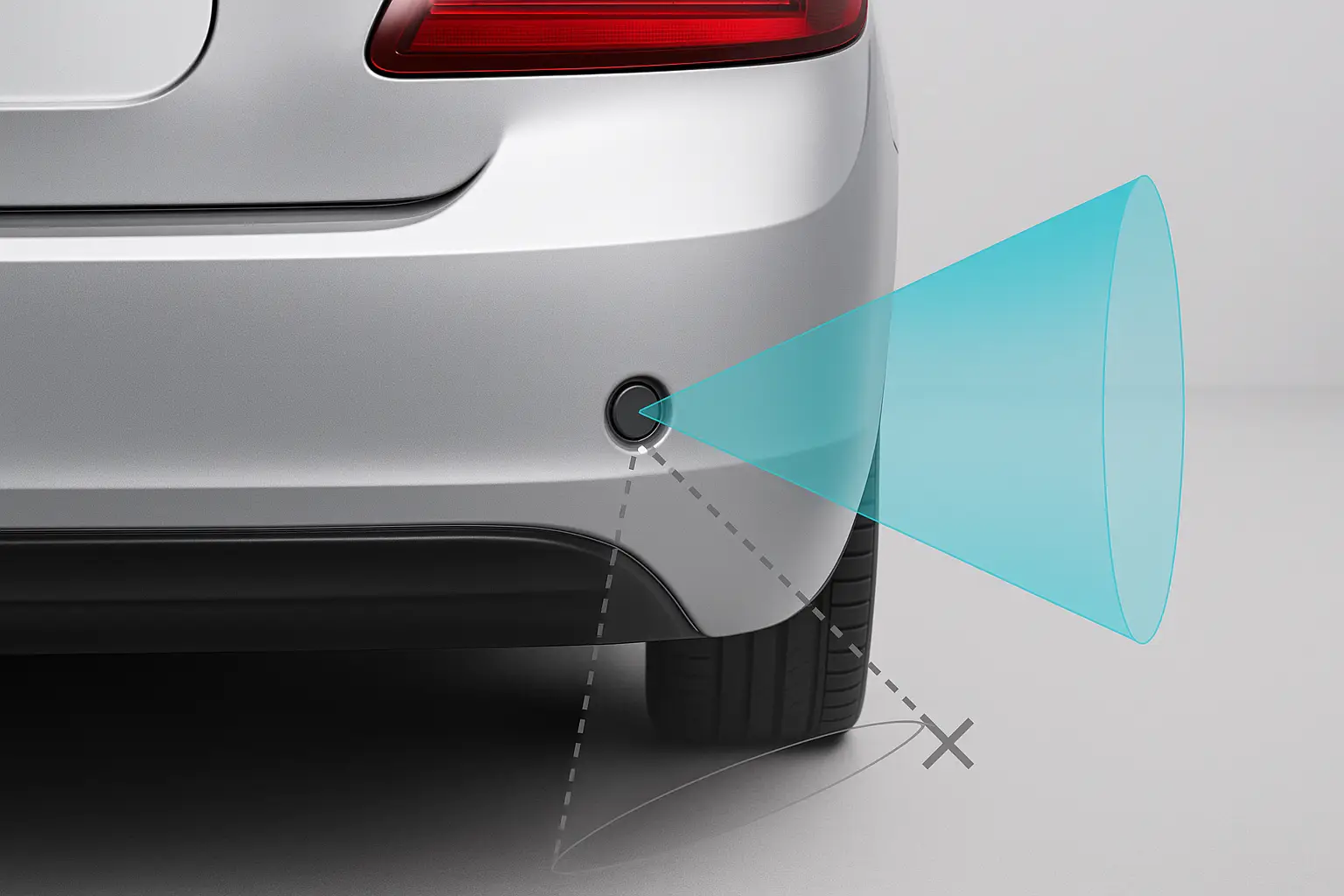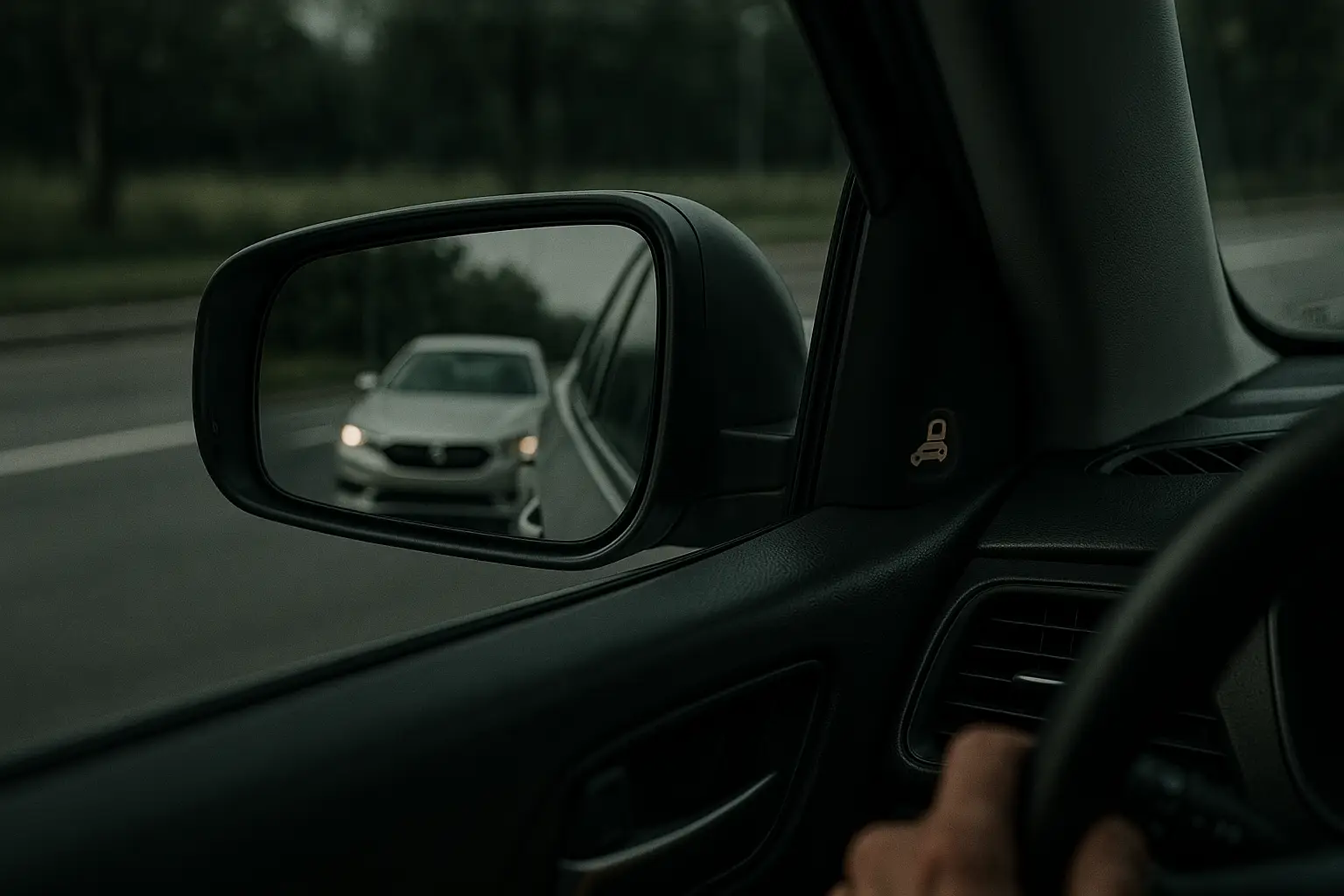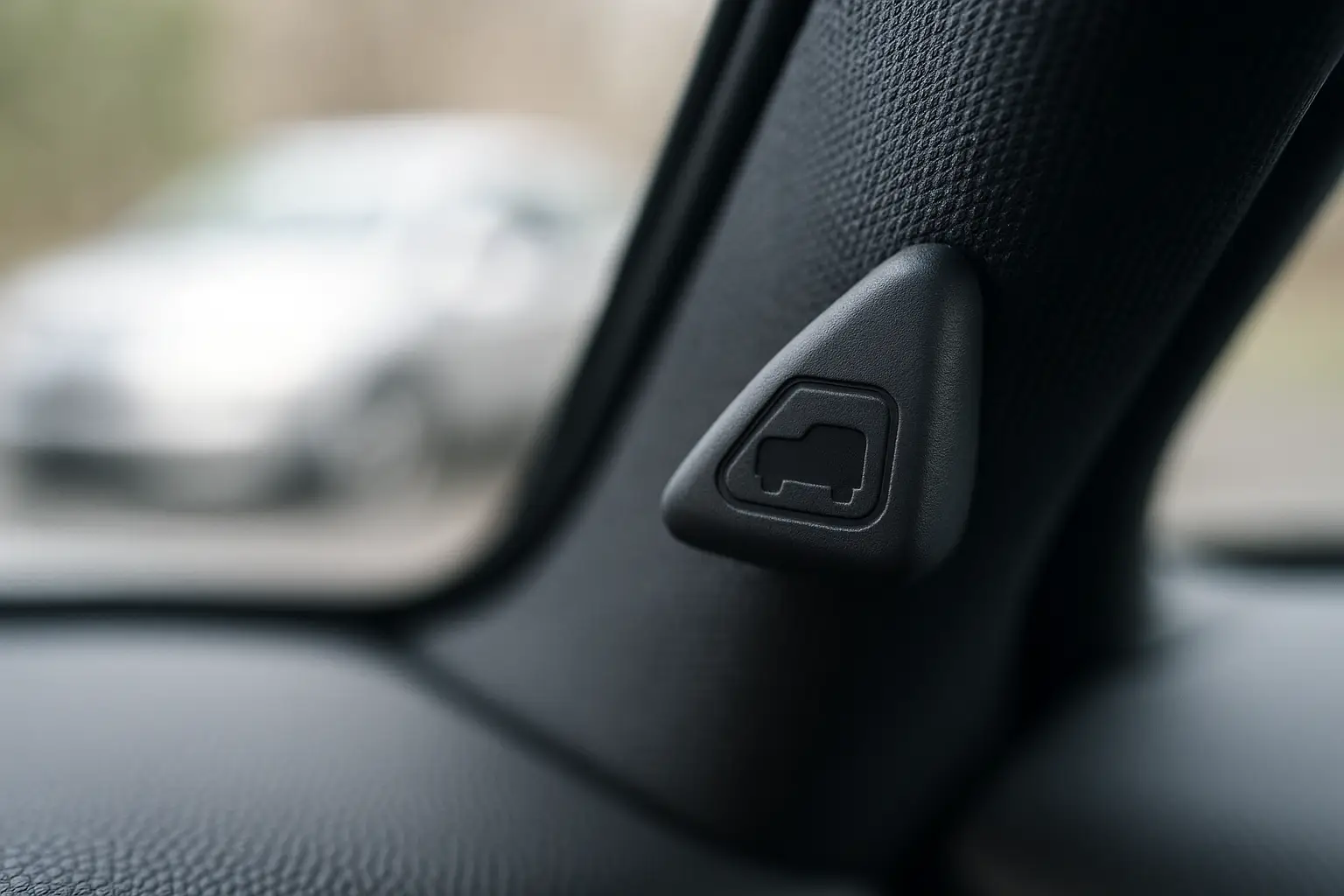You invested in an aftermarket blind spot monitor for safer lane changes, but now it's a source of constant frustration. The endless beeping and flashing for no reason are driving you crazy.
Most aftermarket blind spot system problems, like false alarms or detection failures, are fixable without a mechanic. The solution usually involves cleaning the sensors, checking their alignment and sensitivity, and ensuring all wiring connections are secure and undamaged. These simple checks can restore your system's reliability.

It’s a terrible feeling when a piece of safety technology becomes unreliable. You start to second-guess every alert, or worse, you begin to ignore them completely, which defeats the entire purpose of the installation. But before you write it off as a bad investment, take a breath. These systems are generally straightforward, and their common failures often have surprisingly simple fixes. Let's dig into these issues methodically, so you can diagnose the problem and get back to driving with the confidence you paid for.
Why Does My Blind Spot Monitor Keep Crying Wolf?
The system is supposed to be a quiet guardian, but yours screams at shadows. It beeps at guardrails, parked cars, and sometimes, nothing at all, making you want to unplug it.
Frequent false alarms are typically caused by misaligned sensors detecting stationary objects or the road itself. Other culprits include dirty sensor surfaces, heavy weather reflecting signals, or a sensitivity setting that is simply too high for your driving environment.

When your safety system becomes a constant distraction, its value plummets. The goal is to fine-tune it so that it only alerts you to genuine threats—vehicles in your blind spot. This isn't about complex electronics; it's about physical adjustments and understanding what the sensors "see." Let's break down how to stop the false alarms and restore peace to your cabin.
The Critical Role of Sensor Alignment
Think of your sensors like two small flashlights attached to your bumper, pointing backward. If one is aimed too low, its beam hits the pavement. If aimed too far to the side, it illuminates the guardrail. Your radar-based sensors work the same way, sending out a signal cone. The number one cause of false alarms is an improperly aimed cone. On my old sedan, the system worked perfectly in the city, but on the highway, the right-side indicator was constantly lit. I realized the sensor was aimed just slightly outward, catching the concrete barrier. By parking on level ground and adjusting it inward by just a couple of degrees, the problem vanished. Refer to your installation manual for the precise recommended angle. Ensure they are mounted firmly and don't have any "play" or wobble.
Differentiating Environmental vs. System Issues
Sometimes, the system is working perfectly, but the environment is confusing it. Heavy rain, snow, or thick fog can reflect the radar signals, creating phantom vehicle readings. Tunnels are another classic cause, with the close concrete walls creating a massive radar reflection. If your false alarms only happen in these specific conditions, it might be a limitation of the technology itself. However, many systems have an adjustable sensitivity setting. If you live in an area with frequent bad weather or drive on highways with constant barriers, try lowering the sensitivity. This tells the system to ignore weaker, less defined reflections and focus only on the strong, clear signal of an actual vehicle.
| What the False Alarm Looks Like | Potential Cause | Your First Actionable Step |
|---|---|---|
| Alerts on open road with no cars | Sensor is dirty or pointing at the ground | Thoroughly clean the sensor surface. Park on level ground and check the vertical angle. |
| Alerts constantly on one side of the highway | Sensor is pointing too far outward | Check the horizontal angle. Aim it slightly more toward the rear of the car, not the side. |
| Alerts trigger in heavy rain or tunnels | Environmental interference / High sensitivity | This is often normal. If your system has a sensitivity setting, try lowering it by one level. |
| Alerts are random and unpredictable | Loose wiring or faulty control module | Check the main plugs on the control box. If the problem persists, it may be a hardware fault. |
Why Is My Blind Spot System Ignoring Cars Right Next to Me?
This is the most dangerous failure mode. A car merges into your blind spot, the exact scenario the system is for, and your monitor stays dark and silent. It’s a complete betrayal of trust.
A system that fails to detect vehicles is most often caused by a completely blocked sensor, a loose power or data connection, or a sensor that is aimed incorrectly, pointing away from the critical detection zone. Start by checking for power and physical obstructions.

A non-working system is worse than no system at all because it breeds a false sense of security. Before you panic and schedule a costly diagnostic, let’s run through a logical checklist. The problem is very likely something you can spot and fix in your own garage with no special tools. From a simple fuse to a dirty surface, the solution is usually right in front of you.
The 'Is It Even On?' Checklist
We have to start with the most basic question: is the system getting power? Most aftermarket kits have a startup self-test. When you turn on your car's ignition, the indicator lights should briefly flash and you might hear a short beep. If you get nothing at all, your problem is almost certainly power-related. These systems are often wired with their own inline fuse, separate from your car's main fuse box. Find the control module (usually in the trunk or under a seat) and trace its power wire. You'll likely find a small plastic fuse holder. Pop it open and check the fuse. If the fuse is good, ensure the main wiring harness is clicked firmly into the control module. A loose plug is a very common culprit.
From Physical Blockage to Faulty Wiring
If the system seems to have power but still misses cars, the next step is the sensors themselves. Have you recently had your car detailed? A thick layer of wax, a ceramic coating, or even Paint Protection Film (PPF) applied over the sensors can blind them. Clean the area thoroughly with a gentle cleaner. Next, check the alignment again. If a sensor is aimed too high or too far inward, its detection cone might be pointing into the sky or at your own car, completely missing the adjacent lane. Finally, trace the wire from the sensor back toward the control module. Look for any areas where it might be pinched, stretched, or cut, especially where it passes through the bumper into the car's body. A damaged wire can prevent the signal from ever reaching the control unit.
| Symptom | Primary Suspect | Detailed Check |
|---|---|---|
| System is totally dead (no startup test) | No Power | Check the inline fuse. Confirm the main control module is plugged in securely. |
| One side works, the other doesn't | Sensor-Specific Issue | Clean the non-working sensor. Trace its specific wire back to the module and check the connection. |
| Intermittently misses cars | Poor Alignment or Partial Obstruction | Re-verify sensor angle against the manual's diagram. Check for thick wax or PPF on the bumper. |
| Startup test works, but no detection | Faulty Sensor or Internal Fault | After checking all wiring and alignment, the sensor itself may have failed. |
My System Beeps, So Why Are My Indicator Lights Dead?
You hear the audible alarm telling you a car is there, but a glance at your A-pillar or mirror shows nothing. This disconnect is confusing and makes the system hard to trust.
When the audible alert works but the visual indicators do not, the issue is almost always isolated to the indicator light's circuit. This points to a loose connection at the light itself, a pinched wire, or a failed LED bulb.

The visual indicator is the system's most intuitive feature. It's the quick, silent confirmation you need before making a move. When it fails, you're left with only a beeping sound that lacks directional information. The good news is that because the beeper works, we know the brain of the system—the control module and sensors—is fine. The problem lies in the final, simple path to the light.
Diagnosing the Light Circuit
Your control module sends out separate signals: one to the speaker/beeper and another to the lights. This is why one can fail while the other works. The fix begins by tracing the path of the dead light. Start at the light itself. If it's on your A-pillar, the plastic trim can usually be gently pried away. If it's in the mirror, you may need to pop the mirror glass out (carefully!). Behind it, you'll find a small two-wire connector. This is the most common failure point. Give it a firm push to ensure it's seated. I remember on my first-ever install, I rushed routing the wire and a trim clip pinched it. It worked for a week and then died. Unpinching the wire and securing it properly was all it took. Follow the wire back as far as you can, looking for obvious signs of damage.
Installation Pitfalls and Testing
If the plug is secure, the wire might be damaged somewhere along its path. Common installation mistakes include running the wire where a door can pinch it or failing to leave enough slack, causing the connection to pull apart over time. If you have a multimeter and are comfortable using it, you can perform a simple test. With the system active and a car in the blind spot (you'll need a friend to help), unplug the light and test for DC voltage at the connector. If you see voltage (usually 12V), but the light is off, the LED itself has burned out. If you see no voltage, the problem is further down the line, either in the wiring or at the control box's output pin.
| Light Issue | Most Common Cause | How to Isolate the Problem |
|---|---|---|
| One light is out, the other works | Loose plug at the specific light | Gently pry back the trim panel at the non-working light and check its connector first. |
| Both lights are out (but beeper works) | Main light harness is disconnected | Find the plug on the control module that is responsible for both lights and ensure it's secure. |
| Light flickers or works intermittently | Poor connection or damaged wire | Wiggle the wire at the connector and along its path to see if you can make it turn on/off. |
| No voltage at the light connector | Break in the wire or module fault | The wire is likely cut/pinched somewhere. If the wire is good, the module's output may have failed. |
Conclusion
Mastering your aftermarket blind spot system is not about being an expert mechanic; it's about being a methodical troubleshooter. By addressing the core pillars of functionality—cleanliness, alignment, and secure connections—you can solve over 90% of common issues. This guide empowers you to tackle false alarms, detection failures, and indicator problems with confidence. Don't let a small, fixable issue undermine a valuable safety feature. Taking the time to understand and maintain your system not only saves you money but also ensures it performs its critical job flawlessly, keeping you safer on every journey.


